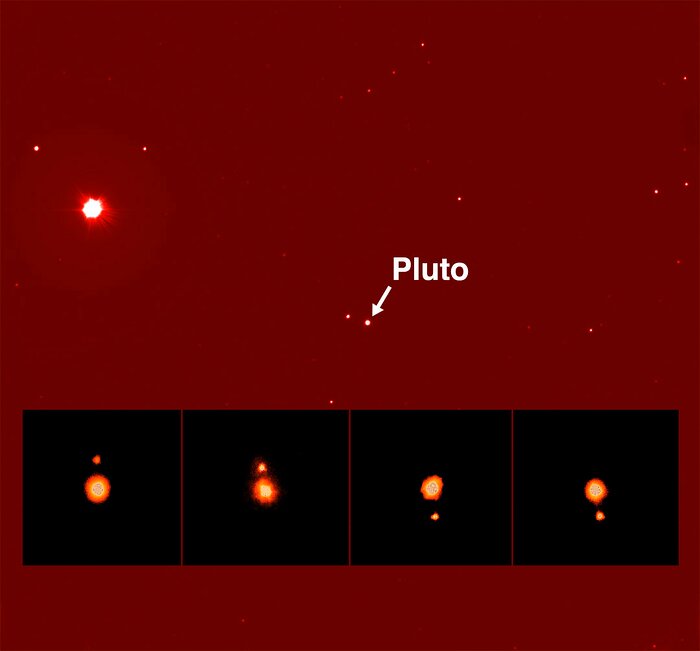
Gemini Observatory / GMOS Image Gemini Observatory / University of Hawai'i Institute for Astronomy Adaptive Optics Group / National Science Foundation
Serendipitous Science
Image of Pluto taken by Gemini North 8-meter Telescope on Mauna Kea on the Big Island of Hawai, June 5, 2002. Pluto is generally the most distant planet from the Sun (6 billion kilometers from Earth) and is the smallest of the nine major planets in the Solar System - in fact, it is smaller than the Earth's Moon. A strange planet, Pluto's orbit is highly eccentric, sometimes coming closer to the Sun than Neptune. Pluto rotates in the opposite direction from most of the other planets, and the plane of Pluto's equator is at almost right angles to the plane of its orbit. Pluto has one moon, called Charon. Inset - Pluto and moon Charon are shown in this sequence of four infrared images obtained on different nights during June 1999 at Gemini North, utilizing the University of Hawaii's infrared camera QUIRC and adaptive optics (AO) system, Hokupa'a. Charon orbits Pluto every 6.4 days at a distance of 20,000 km. Pluto and Charon rotate synchronously, which means they both keep the same face towards each other at all times.